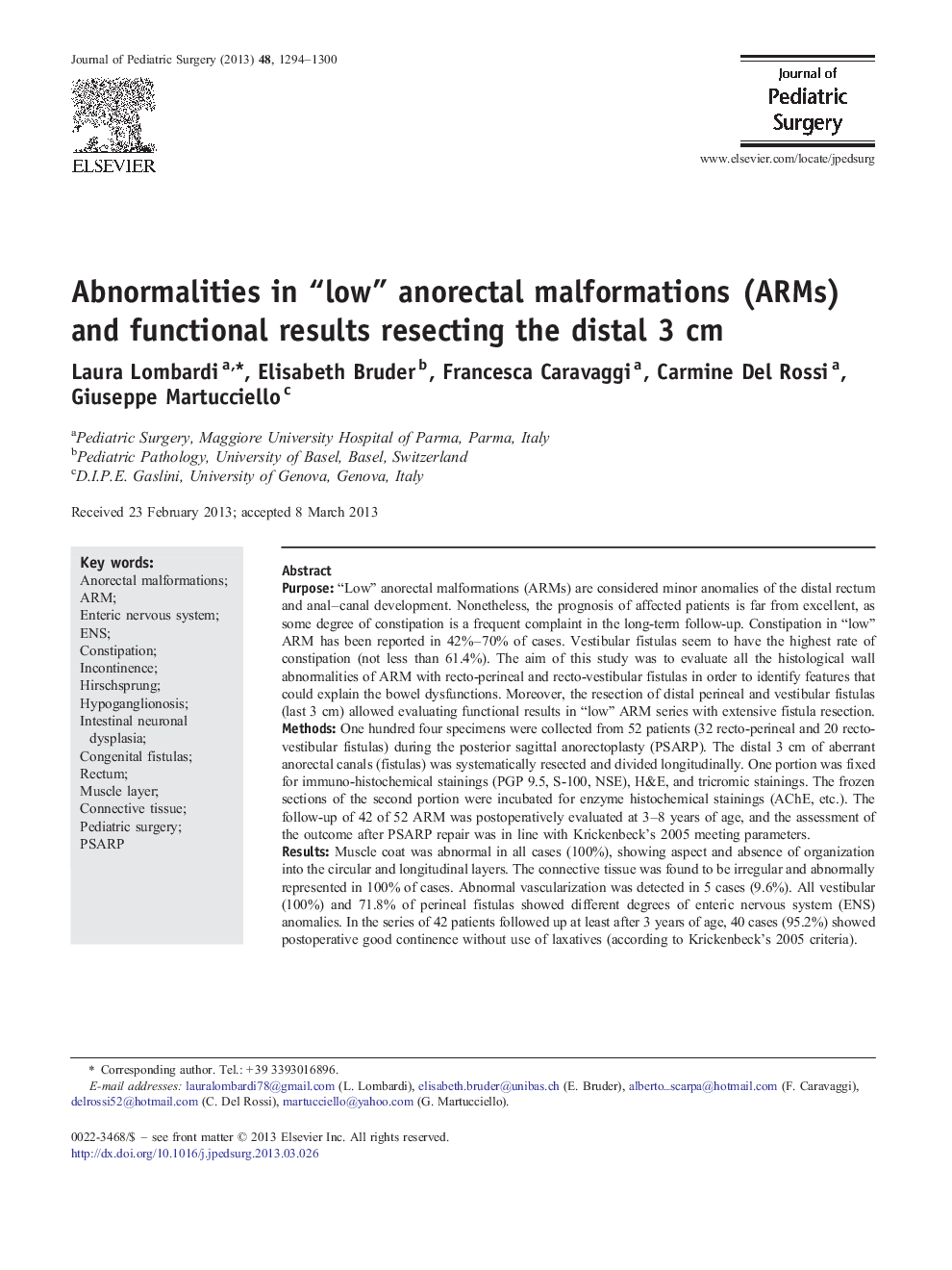| کد مقاله | کد نشریه | سال انتشار | مقاله انگلیسی | نسخه تمام متن |
|---|---|---|---|---|
| 4156005 | 1273764 | 2013 | 7 صفحه PDF | دانلود رایگان |

Purpose“Low” anorectal malformations (ARMs) are considered minor anomalies of the distal rectum and anal–canal development. Nonetheless, the prognosis of affected patients is far from excellent, as some degree of constipation is a frequent complaint in the long-term follow-up. Constipation in “low” ARM has been reported in 42%–70% of cases. Vestibular fistulas seem to have the highest rate of constipation (not less than 61.4%). The aim of this study was to evaluate all the histological wall abnormalities of ARM with recto-perineal and recto-vestibular fistulas in order to identify features that could explain the bowel dysfunctions. Moreover, the resection of distal perineal and vestibular fistulas (last 3 cm) allowed evaluating functional results in “low” ARM series with extensive fistula resection.MethodsOne hundred four specimens were collected from 52 patients (32 recto-perineal and 20 recto-vestibular fistulas) during the posterior sagittal anorectoplasty (PSARP). The distal 3 cm of aberrant anorectal canals (fistulas) was systematically resected and divided longitudinally. One portion was fixed for immuno-histochemical stainings (PGP 9.5, S-100, NSE), H&E, and tricromic stainings. The frozen sections of the second portion were incubated for enzyme histochemical stainings (AChE, etc.). The follow-up of 42 of 52 ARM was postoperatively evaluated at 3–8 years of age, and the assessment of the outcome after PSARP repair was in line with Krickenbeck's 2005 meeting parameters.ResultsMuscle coat was abnormal in all cases (100%), showing aspect and absence of organization into the circular and longitudinal layers. The connective tissue was found to be irregular and abnormally represented in 100% of cases. Abnormal vascularization was detected in 5 cases (9.6%). All vestibular (100%) and 71.8% of perineal fistulas showed different degrees of enteric nervous system (ENS) anomalies. In the series of 42 patients followed up at least after 3 years of age, 40 cases (95.2%) showed postoperative good continence without use of laxatives (according to Krickenbeck's 2005 criteria).ConclusionEvery wall component of the distal rectum can be affected by different structural abnormalities in “low” ARMs. Pediatric surgeons should take into consideration the implications of these structural abnormalities during radical treatment. The resection of a significant portion of the distal fistula seems to permit better functional results.
Journal: Journal of Pediatric Surgery - Volume 48, Issue 6, June 2013, Pages 1294–1300